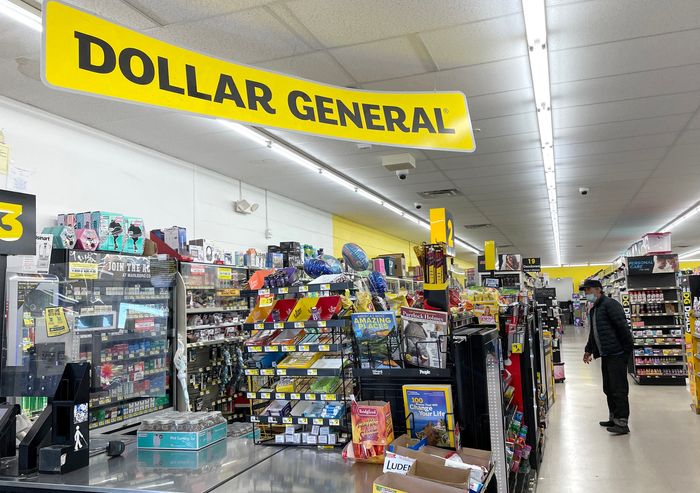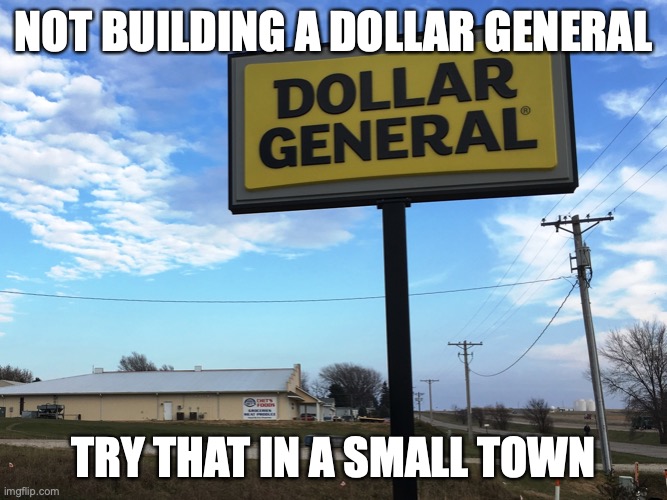- Sep 13, 2002
- 97,800
- 203,882
- 113
Gotta say, I did not see this one coming (From Wall Street Journal):
By
Kate King
Follow
Aug. 21, 2023 5:30 am ET
Retailers are on track to open 1,000 net new stores in the U.S. this year as retail availability hits record lows, in fresh signs of the sector’s resilience despite turmoil in commercial real estate.
Landlords say demand for retail space has remained robust this year, defying inflation pressures, high interest rates and liquidations including Bed Bath & Beyond and Christmas Tree Shops.
Retail’s strength is largely the result of a sharp drop in retail construction since the 2008-09 financial crisis, which allowed the oversupplied sector to digest its existing real estate. Retailers, meanwhile, started using online sales data and analytics technology to pinpoint locations for successful stores.
Also, predictions that internet sales would wipe out physical retail failed to materialize. Digitally native companies are opening bricks-and-mortar locations after reaching the limits of online customer acquisition. Shoppers flocked back to stores and restaurants as pandemic restrictions eased.
As of mid-August, retailers had announced plans to open nearly 4,500 new locations while shutting about 3,500, according to advisory and research firm Coresight Research. Nationwide, the rate of available retail space fell to 4.8% in the second quarter, the lowest level in the 18 years the data has been tracked by real-estate-services firm CBRE.
The retail real-estate recovery stands in contrast to the office market, where the popularity of hybrid work schedules has helped push up the office-vacancy rate to a 30-year high of 18.2%, according to CBRE.
“Office is in the crosshairs,” said Conor Flynn, chief executive of shopping-center owner and operator Kimco Realty. “But retail is outperforming.”
Shopping-center owners, particularly in the suburbs, have benefited from the rise of remote work since the onset of Covid-19 in 2020, as consumers visit local grocery stores and other shops more often during the workweek. In response, some fast-casual restaurants and other retailers have shifted from urban business districts to the subur
Demand for retail space has stayed robust despite the liquidation of Bed Bath & Beyond. WSJ’s Suzanne Kapner explains the events that led to the company’s demise. Illustration: John McColgan
“Suburbanization, work from home, all these things happened at the same time that there was no new supply,” said John Kite, CEO of shopping-center real-estate investment trust Kite Realty Group Trust. “That gives us better pricing power.”
While retail landlords in some areas, including large cities, have been forced to lower rents since the start of the pandemic, the overall average asking rent for retail space in the U.S. has increased 6.3% since the second quarter of 2020. Asking rents now average more than $23 a square foot, according to CBRE, the highest level in at least a decade.
Kimco increased rents more than 30% last quarter from backfilling spaces vacated by Bed Bath & Beyond, Flynn said. The landlord has been fielding calls from discount retailers, grocers, home-goods stores, bookstores and apparel companies interested in the bankrupt retailer’s former real estate.
Retail sales rose a seasonally adjusted 0.7% in July compared with the prior month, according to Commerce Department data released last week. Americans’ spending has now increased for four consecutive months and appears to be outpacing inflation.
“I think the consumer is actually healthier than people anticipate,” Flynn said.
Not all retail is thriving. Low-end, enclosed malls are in crisis as department stores contract and other tenants move to open-air locations. Of the $942 million in sales of distressed retail properties so far this year, two-thirds involved mall properties, according to data provider MSCI Real Assets. Older malls have fallen out of favor in areas that have lost population, said Jim Costello, chief economist for MSCI Real Assets.
“The malls built in the ’60s and ’70s to sell polyester plants to manufacturing workers—when those manufacturing jobs go away, there’s no sales to support the malls,” Costello said.
 Dollar General and other dollar-store chains are signing the most retail leases in the U.S. this year. PHOTO: JUSTIN SULLIVAN/GETTY IMAGES
Dollar General and other dollar-store chains are signing the most retail leases in the U.S. this year. PHOTO: JUSTIN SULLIVAN/GETTY IMAGES
But some high-end malls are reporting strong recoveries in leasing and foot traffic. Real-estate investment trust Macerich, which owns malls including Scottsdale Fashion Square in Arizona and Tysons Corner Center in Virginia, notched its strongest leasing volume since the 2008-09 financial crisis last year. Leasing so far this year is exceeding last year’s pace.
“On the A-mall operator side, rumors of our demise have been greatly exaggerated,” Macerich CEO Tom O’Hern said. “We’re actually doing quite well.”
Retail investment has cooled, MSCI data shows, with total deal volume down 48% in the first half of the year compared with the same period in 2022. Costello said the slowdown reflects rising interest rates and a natural adjustment from last year’s surge in sales.
Nationwide, dollar stores are signing the most leases again this year, according to Coresight. Dollar General alone plans to open about 1,000 stores this year. Other retailers are also adding locations, ranging from 12 new stores at pool-supplies company Leslie’s to plans for more than 200 openings this year at discount chain Five Below.
Crunch Fitness expects to add more than five dozen gyms this year, up from 40 openings in 2022, according to Ben Midgley, CEO of Crunch Franchising. The company’s real-estate team has been surprised by the stiff competition for available space coming out of the pandemic.
“We thought it was going to be a massive opportunity to sign leases,” Midgley said. “The landlords were surprisingly resilient in maintaining the rents they wanted or even pushing them up a bit.”
A Bright Spot in Commercial Real Estate: Retail Shops
New store openings remain strong, overcoming inflation and interest-rate challenges
By
Kate King
Follow
Aug. 21, 2023 5:30 am ET
Retailers are on track to open 1,000 net new stores in the U.S. this year as retail availability hits record lows, in fresh signs of the sector’s resilience despite turmoil in commercial real estate.
Landlords say demand for retail space has remained robust this year, defying inflation pressures, high interest rates and liquidations including Bed Bath & Beyond and Christmas Tree Shops.
Retail’s strength is largely the result of a sharp drop in retail construction since the 2008-09 financial crisis, which allowed the oversupplied sector to digest its existing real estate. Retailers, meanwhile, started using online sales data and analytics technology to pinpoint locations for successful stores.
Also, predictions that internet sales would wipe out physical retail failed to materialize. Digitally native companies are opening bricks-and-mortar locations after reaching the limits of online customer acquisition. Shoppers flocked back to stores and restaurants as pandemic restrictions eased.
As of mid-August, retailers had announced plans to open nearly 4,500 new locations while shutting about 3,500, according to advisory and research firm Coresight Research. Nationwide, the rate of available retail space fell to 4.8% in the second quarter, the lowest level in the 18 years the data has been tracked by real-estate-services firm CBRE.
The retail real-estate recovery stands in contrast to the office market, where the popularity of hybrid work schedules has helped push up the office-vacancy rate to a 30-year high of 18.2%, according to CBRE.
“Office is in the crosshairs,” said Conor Flynn, chief executive of shopping-center owner and operator Kimco Realty. “But retail is outperforming.”
Shopping-center owners, particularly in the suburbs, have benefited from the rise of remote work since the onset of Covid-19 in 2020, as consumers visit local grocery stores and other shops more often during the workweek. In response, some fast-casual restaurants and other retailers have shifted from urban business districts to the subur
Demand for retail space has stayed robust despite the liquidation of Bed Bath & Beyond. WSJ’s Suzanne Kapner explains the events that led to the company’s demise. Illustration: John McColgan
“Suburbanization, work from home, all these things happened at the same time that there was no new supply,” said John Kite, CEO of shopping-center real-estate investment trust Kite Realty Group Trust. “That gives us better pricing power.”
While retail landlords in some areas, including large cities, have been forced to lower rents since the start of the pandemic, the overall average asking rent for retail space in the U.S. has increased 6.3% since the second quarter of 2020. Asking rents now average more than $23 a square foot, according to CBRE, the highest level in at least a decade.
Kimco increased rents more than 30% last quarter from backfilling spaces vacated by Bed Bath & Beyond, Flynn said. The landlord has been fielding calls from discount retailers, grocers, home-goods stores, bookstores and apparel companies interested in the bankrupt retailer’s former real estate.
Retail sales rose a seasonally adjusted 0.7% in July compared with the prior month, according to Commerce Department data released last week. Americans’ spending has now increased for four consecutive months and appears to be outpacing inflation.
“I think the consumer is actually healthier than people anticipate,” Flynn said.
Not all retail is thriving. Low-end, enclosed malls are in crisis as department stores contract and other tenants move to open-air locations. Of the $942 million in sales of distressed retail properties so far this year, two-thirds involved mall properties, according to data provider MSCI Real Assets. Older malls have fallen out of favor in areas that have lost population, said Jim Costello, chief economist for MSCI Real Assets.
“The malls built in the ’60s and ’70s to sell polyester plants to manufacturing workers—when those manufacturing jobs go away, there’s no sales to support the malls,” Costello said.
But some high-end malls are reporting strong recoveries in leasing and foot traffic. Real-estate investment trust Macerich, which owns malls including Scottsdale Fashion Square in Arizona and Tysons Corner Center in Virginia, notched its strongest leasing volume since the 2008-09 financial crisis last year. Leasing so far this year is exceeding last year’s pace.
“On the A-mall operator side, rumors of our demise have been greatly exaggerated,” Macerich CEO Tom O’Hern said. “We’re actually doing quite well.”
In some respects, the resurgence in retail real estate is moderating after 2022’s boom in retailer expansion and investor activity. Announced retail closings have accelerated a bit from this time last year, according to Coresight.Retail investment has cooled, MSCI data shows, with total deal volume down 48% in the first half of the year compared with the same period in 2022. Costello said the slowdown reflects rising interest rates and a natural adjustment from last year’s surge in sales.
Nationwide, dollar stores are signing the most leases again this year, according to Coresight. Dollar General alone plans to open about 1,000 stores this year. Other retailers are also adding locations, ranging from 12 new stores at pool-supplies company Leslie’s to plans for more than 200 openings this year at discount chain Five Below.
Crunch Fitness expects to add more than five dozen gyms this year, up from 40 openings in 2022, according to Ben Midgley, CEO of Crunch Franchising. The company’s real-estate team has been surprised by the stiff competition for available space coming out of the pandemic.
“We thought it was going to be a massive opportunity to sign leases,” Midgley said. “The landlords were surprisingly resilient in maintaining the rents they wanted or even pushing them up a bit.”
